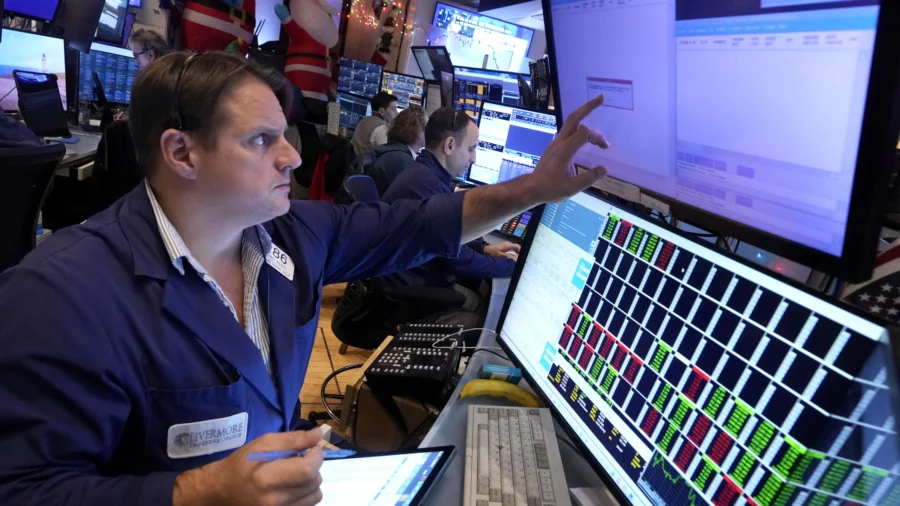The Dow Jones Industrial Average has extended its losing streak to 10 days, the first such skid since 1974, as the Federal Reserve’s interest rate outlook for 2025 disappointed investors.
The Fed announced on Dec. 18 that it expects fewer interest rate cuts in 2025 because of inflation pressures. Following the announcement, the blue-chip index tanked by 1,123.03 points, or 2.58 percent, to 42,326.87.
Its sister indexes also crashed to finish the Dec. 18 trading session. The tech-heavy Nasdaq Composite Index plummeted by 716.37 points, or 3.56 percent, to 19,392.69. The S&P 500 declined by 178.45 points, or 2.95 percent, to 5,872.16.
U.S. Treasury yields, particularly the long-term ones, rocketed midweek. The benchmark 10-year yield soared by nearly 13 basis points to above 4.51 percent. The 20-year yield reached 4.77 percent, while the 30-year bond topped 4.66 percent.
The greenback also spiked following the latest Fed developments. The U.S. dollar index, a measure of the buck against a weighted basket of currencies, surged by more than 1 percent to above 108.00.
Wall Street shrugged off the Fed’s quarter-point rate cut at the December policy meeting, which lowered the benchmark federal funds rate to a target range of 4.25 to 4.5 percent.
Instead, investors centered their attention on the central bank’s outlook for the next year.
According to the updated Summary of Economic Projections, officials see only two rate cuts next year, totaling 50 basis points. The dot plot, a gauge of individual members’ forecasts for interest rates, suggested the median benchmark federal funds rate would decline to 3.9 percent by the end of 2025.
Policymakers previously penciled in four quarter-point rate cuts at the September meeting for a total of 1 percent.
The Fed expects two more rate cuts in 2026 and one reduction in 2027.
On a long-term basis, the rate-setting Federal Open Market Committee anticipates the neutral rate would be 3 percent. This is little changed from what officials wrote in their September forecasts.
“With today’s action, we have lowered our policy rate by a full percentage point from its peak, and our policy stance is now significantly less restrictive,” Federal Reserve Chair Jerome Powell said at the post-meeting press conference. “We can, therefore, be more cautious as we consider further adjustments to our policy rate.”
According to Powell, the higher adjustments were mainly attributed to returning inflation risks.
“The Fed is clearly concerned,” Charlie Ripley, the senior investment strategist for Allianz Investment Management, said in a note emailed to The Epoch Times.
“We see the bar being raised for rate cuts going forward from here, and given [that the] Fed is operating on a data-dependent level, any meaningful upticks of inflation raise the risk that additional rate cuts, if any, will be few and far between.”
Investors now believe that the Fed is unlikely to cut rates until they see clear signs that inflation is firmly moving toward the 2 percent target.
“Earlier in the year, the market was factoring in 3–4 rate cuts in 2025; now, it has to adjust to two cuts with very uncertain timing,” Stoyan Panayotov, financial adviser and the founder of Babylon Wealth Management, told The Epoch Times.
“The bottom line is that the stock market doesn’t like uncertainty, and today’s Fed announcement put more uncertainty on the table.”
The Fed will hold its next two-day policy meeting in January. Investors are overwhelmingly betting that officials will hit the pause button, according to the CME FedWatch Tool.
Markets will now pivot their focus to the Fed’s preferred inflation gauge—the personal consumption expenditure (PCE) price index. The November PCE is anticipated to tick up for the second straight month to 2.5 percent.
Emel Akan contributed to this report.
From The Epoch Times

